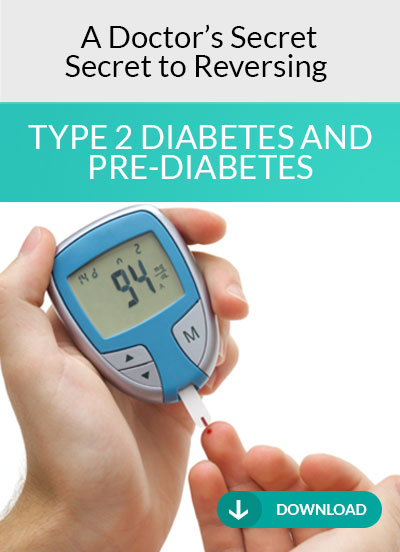Your blood sugar is more complicated than you think and while being diagnosed with prediabetes or Type 2 Diabetes is concerning – there is more to this condition and the root causes of it. Blood sugar, also known as glucose, comes from the food in your diet. Glucose plays an important role in our energy levels and other organ functions. So, why is too much bad and what causes high blood sugar levels? In functional medicine, the root cause is an important part of the equation and once discovered, you can reverse diabetes and stop the damage that it causes.
How Do Blood Sugar and Insulin Work?
After you eat foods with carbohydrates, your digestive system breaks them down to glucose, which is then absorbed into your bloodstream. Your pancreas, a gland behind the stomach, then releases insulin, which helps manage the influx of glucose. This major hormone wakes up cells so they can use the glucose from your meal. Insulin also balances blood sugar by sending any extra glucose in your body to the liver for storage as glycogen.
Not enough blood sugar? The pancreas releases glucagon, which is a hormone that increases blood sugar levels. Glucagon tells your liver to turn the glycogen into glucose and push it into your blood. If your diet does not include enough sugar over time, your liver hoards the glucagon and uses it to make ketones, breaking fat into the fuel your body needs to work. This is known as ketogenesis – which may sound familiar now that the “keto diet” has gained so much popularity.
In other words, this all means your pancreas and your liver work in tandem – adjusting as needed when you eat – to balance your blood sugar levels all the time. When it does not balance your levels – your blood sugar can be too high – which can mean you may have prediabetes, gestational diabetes, type 1 diabetes, or type 2 diabetes.
When too much sugar is coursing through the blood stream, it damages cells, proteins, and tissues. It damages nerves, blood vessels, and the immune system. That’s why diabetics have to watch out for their heart, eyes, toes, kidneys, and more.
Type I diabetes is classified as an autoimmune disease because the immune system attacks the pancreas and destroys insulin-producing cells. Research is indicating that type 2 diabetes is also an autoimmune disease linked to low-grade inflammation caused by pro-inflammatory cytokines and Treg cells not able to reduce inflammation and therefore trigger an immune response.
What Are the Symptoms of Type 2 Diabetes?
Type 2 diabetes occurs when your blood glucose is regularly too high. According to the CDC, 34 million Americans have diabetes, with most of them diagnosed with type 2. As we discussed before, your pancreas releases the hormone insulin – however, if your cells do not respond to it, it is known as insulin resistance. This is when your pancreas will continue producing more insulin to “wake up your cells.” As insulin fails to do its job, your blood sugar levels will increase. Also known as prediabetes or type 2 diabetes, high blood sugar damages your organs, causing cardiovascular disease, kidney damage, eye damage, and slow wound healing.
Type 2 Diabetes Symptoms Include:
- Increased and frequent urination
- Increased hunger
- Increased thirst
- Fatigue
- Irritability
- Blurred vision
- Slow-healing wounds
- Frequent infections
- Darkened skin in areas of the body
- Weight gain
- Decreased sex drive
- Erectile dysfunction
- Complications include blindness, kidney failure, and neuropathy in lower extremities which can lead to amputation
These Symptoms of Type 2 Diabetes Can Also Be Seen in Autoimmunity:
- Inflammation
- Estrogen dominance
- Increased blood cholesterol and triglycerides
- Low blood sugar, which can cause hormonal imbalance (cortisol) and/or reactive hypoglycemia
- Brain fog
- Fatigue
A Deeper Look at Insulin Resistance and the Root Causes of Type 2 Diabetes
A complex set of factors are to blame when someone develops type 2 diabetes. It is estimated that by the year 2050, 1 in 3 Americans will be diagnosed with type 2 diabetes. Insulin resistance is a common reason why people have diabetes; however, this is certainly not the only reason that diabetics have issues with maintaining blood sugar levels in the normal range.
Insulin resistance is only part of the picture when assessing someone with diabetes. Surprisingly, insulin resistance can also happen without diabetes. Insulin resistance can go on, undetected, years before blood sugar goes high on lab tests, and there may not be any obvious symptoms. The good news is that many of the root causes can be addressed and insulin resistance can be reversed in many situations.
Some Root Causes of Type 2 Diabetes Include:
- Microbiome imbalances
- Issues with cellular energy production
- Blood sugar dysfunction
- Immune dysfunction
- Hormonal imbalance
- Thyroid dysfunction
- Liver dysfunction
- Adrenal dysfunction
- Nutritional deficiencies
- Exposure to toxins
- Food sensitivities
- Inflammation
- Dietary factors including a Western diet that is comprised of refined carbohydrates, fructose, and industrial seed oils
- Not getting enough sleep
- Chronic stress
- A sedentary lifestyle that does not include regular activity
- Genetics
- Obesity or fat tissue
For example, inflammation and oxidative stress in your body (an imbalance of the antioxidants and free radicals in your body) can cause your pancreas to make excess insulin and can harm the liver so it’s unable to rid itself of toxins adequately.
Hormonal imbalances –healthy levels of hormones improve how cells respond to insulin. However, too much testosterone in women and too much estrogen in men can lead to fat storage. Excess fat tissue affects the way your body handles blood sugar and it can increase hormone levels even further. Increased blood pressure, cholesterol, and triglycerides, as well as insulin resistance, can be caused by hormone imbalances.
People with type 1 diabetes are unable to produce insulin at all and need it to survive. However, people with type 2 diabetes can still produce insulin, except their cells are not responding to it. The fix for diabetes and insulin resistance is not as simple as taking more insulin. There is a way to help reverse it by figuring out why your cells are not listening to signals from your body.
How Can You Reverse Insulin Resistance and Address the Root Causes of Type 2 Diabetes?
You may think that changing your diet or exercising will be the answer and partially it is. However, since there are so many root causes of type 2 diabetes, you need to get to those answers before you can begin healing your body. A functional medicine doctor will want to address your unique body system and figure out the underlying reasons for your insulin resistance. Comprehensive lab testing together with a thorough assessment of your nutrition and lifestyle habits can uncover the true reasons you may be prediabetic or suffer from type 2 diabetes. Also, because insulin is rarely ever checked on standard blood work, it is often overlooked as a trigger for autoimmune diseases. I often see autoimmune patients with low blood sugar and insulin surges, which leads to insulin resistance.
With this information, your healthcare practitioner will determine what changes you may need to make to reverse your insulin resistance, prediabetes, or type 2 diabetes. Schedule for a complimentary discovery consultation to get started healing from within.
Board Certified in Integrative Medicine
Certified Functional Medicine Practitioner
Institute for Functional Medicine Certified Practitioner






